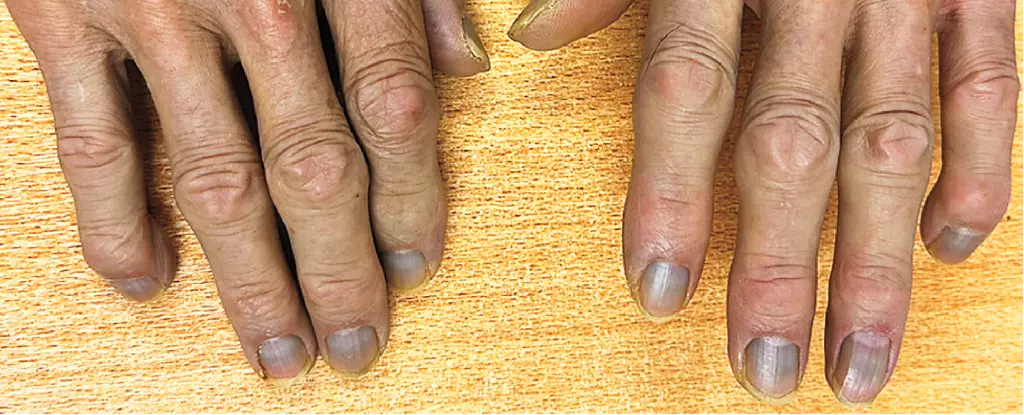An intriguing medical case recently emerged from a hospital in Hong Kong involving an 84-year-old man whose visit was initially prompted by urinary flow obstruction. However, clinicians were drawn into a puzzling anomaly — a distinctive grayish tint to his skin, eyes, and nails that had been present for five years. Such a presentation brings to light the complexities of diagnosis in geriatric patients, particularly when symptoms seem unrelated.
Upon further examination and a series of blood tests, the medical team discovered a shocking culprit: silver. The individual’s body contained silver concentrations vastly exceeding normal levels—more than 40 times higher than what one would typically find in the bloodstream. This excessive silver saturation had precipitated the formation of microscopic oxidized granules beneath the patient’s skin, a hallmark of a condition known as argyria.
Argyria arises from systemic silver accumulation, primarily affecting the skin and eyes. While exceedingly rare in contemporary medical practice, cases have been documented in historical contexts, particularly involving miners and artisans who were regularly exposed to silver. Surprisingly, in some modern instances, the condition can stem from the use of medications containing silver, which were touted for their antimicrobial properties.
Despite warnings from the U.S. Food and Drug Administration (FDA) regarding the safety and efficacy of silver-based treatments, colloidal silver continues to be promoted worldwide as a dietary supplement. Advocates claim it expels toxins and boosts the immune system; however, there is a conspicuous absence of scientific backing supporting these assertions. Unfortunately, this disconnection between public perception and scientific evidence can lead to dire health consequences, such as argyria, often overlooked until significant symptoms manifest.
The routes through which silver enters the body include inhalation, dermal absorption, and ingestion. Once inside, silver behaves as a charged particle, moving throughout the body and potentially reacting with ultraviolet (UV) radiation from sunlight. This interaction triggers changes in the silver ions, causing them to reflect sunlight and create the characteristic gray or blue discoloration.
This particular patient’s occupational history added another layer of intrigue. His long tenure as a waiter did not provide a logical explanation for the high levels of silver found in his system. There were no reported environmental exposures in his home or community that might account for the condition. This leaves a critical question unanswered: how did this elderly man accumulate such excessive amounts of silver?
Fortunately, despite the striking cosmetic implications of argyria, ongoing clinical assessments indicate that the man’s long-term health remains largely unaffected. While silver accumulation does pose a minor risk of interfering with the absorption of certain medications, such as antibiotics and hormones like thyroxine, these risks are generally deemed manageable.
As it stands, once silver is deposited in the body’s tissues, there exist no known methods for its removal. This presents the patient with a difficult reality: a permanently altered skin tone that he must now navigate socially and psychologically. Nonetheless, his medical team intends to monitor his condition, ensuring that any future complications are addressed swiftly.
The case of this elderly man underscores the importance of comprehensive medical evaluation, particularly when seemingly unrelated symptoms arise. As researchers continue to explore the dimensions of argyria and silver-based treatments, the narrative serves as a potent reminder of the intricacies in human health and the risks posed by unverified remedies. While the exact origin of the patient’s silver accumulation remains elusive for now, ongoing vigilance by healthcare providers will ensure that similar cases receive the attention they deserve, potentially aiding in uncovering the underlying environmental or medical factors at play.



Leave a Reply